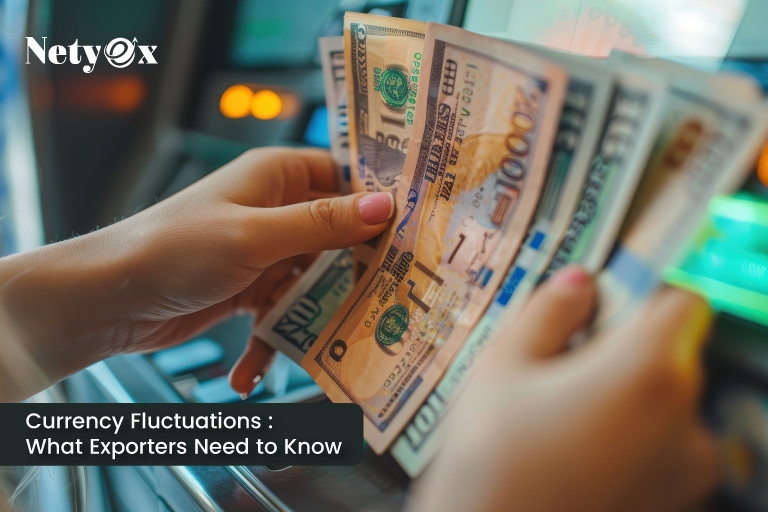Introduction to Currency Fluctuations
In today’s interconnected global economy, exporters face challenges that go far beyond logistics and market entry strategies. One of the most pressing issues is currency fluctuations—sudden changes in exchange rates that can make or break a trade deal. For exporters, these fluctuations can directly affect profitability, pricing strategies, and long-term competitiveness. Understanding how currency volatility works and adopting smart risk management practices is essential for sustainable success in international trade.
Definition of Currency Fluctuations
Currency fluctuations refer to the rise and fall in the value of one currency against another. These changes are driven by a variety of factors, including market demand, economic policies, and geopolitical events. Unlike domestic businesses that deal in a single currency, exporters must constantly adjust to these shifts when trading internationally.
Causes of Currency Volatility
Inflation and Interest Rates
Countries with stable inflation typically enjoy stronger currencies. When inflation rises, purchasing power decreases, weakening the currency. Interest rates also play a role—higher rates attract foreign investments, boosting demand for that country’s currency.
Government Policies and Central Banks
Central banks intervene to stabilize currencies, using tools like monetary policy adjustments and foreign exchange reserves. Exporters often feel the effects when governments tighten or loosen financial regulations.
Political Instability and Global Events
Elections, wars, and pandemics can destabilize currencies overnight. For instance, during the COVID-19 crisis, exporters worldwide experienced dramatic shifts in currency values.
Speculation and Market Sentiment
Traders in the forex market often speculate on future movements, which in turn causes volatility. A rumor or news headline can trigger massive swings in exchange rates, directly impacting exporters.
How Currency Fluctuations Affect Exporters
Impact on Pricing and Competitiveness
A strong home currency can make exports more expensive abroad, reducing competitiveness. Conversely, a weaker currency may boost exports but cut into profit margins if costs are denominated in foreign currencies.
Exchange Rate Risk in International Trade
Exporters face transaction risk when exchange rates change between the signing of a contract and payment. Even small fluctuations can result in significant financial losses.
Effects on Supply Chain and Procurement
Importing raw materials in foreign currencies exposes exporters to additional risks. If costs rise due to unfavorable currency shifts, production expenses increase.
Profit Margins and Cash Flow Challenges
Unpredictable fluctuations disrupt cash flow planning. Exporters may earn less than expected when converting foreign earnings back into their domestic currency.
Strategies Exporters Can Use to Manage Risks
Forward Contracts and Hedging Tools
Forward contracts allow exporters to lock in an exchange rate for a future date, reducing uncertainty. Options and swaps are also common tools for managing risk.
Currency Diversification in Trade
Dealing with multiple currencies spreads out risk. Exporters can reduce exposure by trading with different markets rather than relying on a single country.
Negotiating Contracts in Stable Currencies
Exporters often prefer contracts in stable currencies like the U.S. dollar or euro. This minimizes risk compared to volatile currencies.
Dynamic Pricing and Flexible Payment Terms
Adopting flexible pricing models ensures exporters remain competitive despite currency shifts. Adjusting payment terms can also help balance risks.
Real-World Examples of Exporters Facing Currency Challenges
Case Study: Small Businesses in Emerging Markets
Small exporters in developing nations often lack the financial tools to hedge currency risks. As a result, they may face severe losses when local currencies depreciate.
Case Study: Large Corporations in Developed Economies
Major corporations often hedge extensively using sophisticated financial instruments. However, even they face challenges when unexpected geopolitical events destabilize markets.
Role of Technology and Digital Tools in Managing Currency Risks
Currency Risk Management Software
Modern tools allow exporters to track real-time exchange rates, forecast risks, and automate hedging strategies.
Blockchain and Digital Payments
Blockchain technology offers secure and transparent international payments, reducing delays and costs linked to currency conversions.
Expert Tips for Exporters to Stay Competitive
Building Relationships with Banks and Advisors
Strong partnerships with financial institutions provide exporters with better access to credit lines and hedging solutions.
Monitoring Global Economic Trends
Keeping an eye on economic indicators, such as inflation data and central bank announcements, helps exporters anticipate currency movements.
Creating Contingency Plans for Volatile Markets
Exporters should always prepare backup strategies, including diversifying suppliers and adjusting markets to stay resilient during crises.
Frequently Asked Questions (FAQs)
1. Why are currency fluctuations important for exporters?
They directly impact pricing, profitability, and competitiveness in global trade.
2. How can exporters protect themselves from currency risks?
By using hedging instruments like forward contracts, diversifying markets, and negotiating in stable currencies.
3. Do strong currencies always hurt exporters?
Not always—while they make goods more expensive abroad, they can reduce import costs for raw materials.
4. Can small exporters manage currency risks effectively?
Yes, with proper financial planning, digital tools, and partnerships with banks, even small exporters can mitigate risks.
5. Which currencies are considered stable for trade contracts?
The U.S. dollar (USD), euro (EUR), and British pound (GBP) are often seen as more stable.
6. What role does technology play in currency risk management?
Technology provides exporters with forecasting tools, automated trading systems, and blockchain solutions for safer international transactions.
Conclusion: Turning Currency Fluctuations into Opportunities
Currency fluctuations are an unavoidable reality for exporters. Instead of fearing volatility, exporters should treat it as a challenge that can be managed with the right tools and strategies. By hedging risks, diversifying markets, and leveraging technology, businesses can not only protect themselves but also seize new opportunities in the ever-changing global marketplace.













